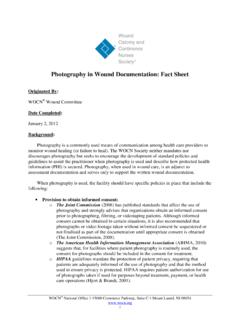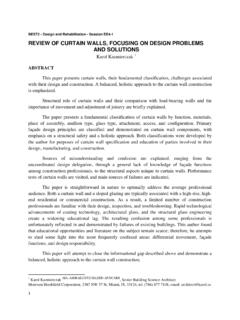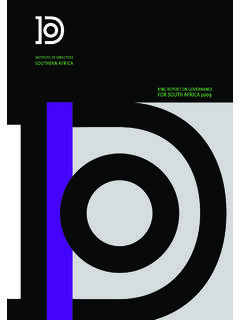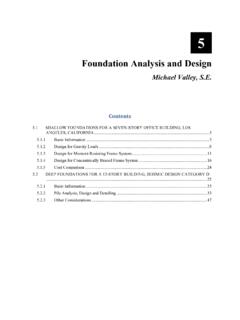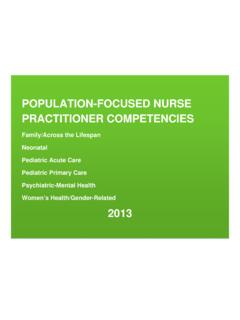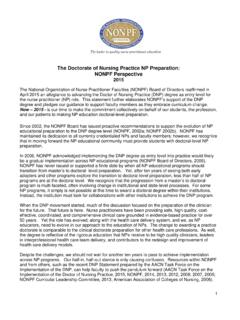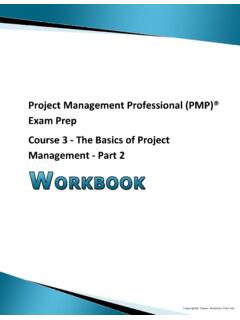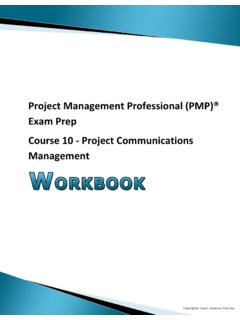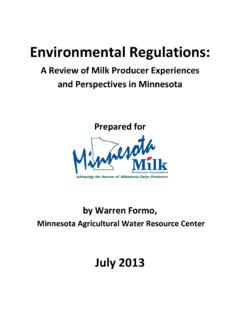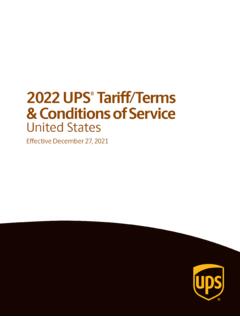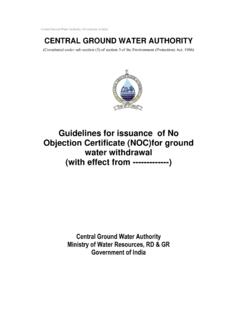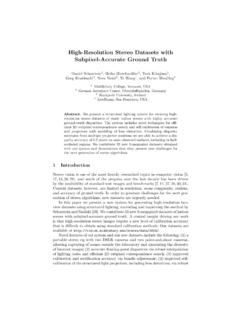Transcription of New Site-Specific Ground Motion Requirements of ASCE 7-16
1 2017 SEAOC CONVENTION PROCEEDINGS. New Site-Specific Ground Motion Requirements of ASCE 7-16. Charles A. Kircher, , , Principal Kircher & Associates, Consulting Engineers Palo Alto, California Abstract Requirements for buildings, Chapter 21 which describes site- specific earthquake Ground Motion procedures and Chapter 22. This paper describes the seismic design criteria of ASCE 7-16 which provides maps of risk-adjusted maximum considered and specifically the new Requirements for Site-Specific Ground earthquake (MCER) earthquake Ground Motion parameters (Ss motions. Initially developed by the Provisions Update and S1) and the long-period transition period parameter (TL). Committee of the Building Seismic Safety Council for the Section defines the applicability of permitted analytical 2015 NEHRP Recommended Seismic Provisions, FEMA P- procedures which include the equivalent lateral force (ELF).
2 1050 (FEMA 2015), the new Site-Specific Ground Motion procedure of Section , the modal response spectrum Requirements address an identified short-coming with ELF analysis (MRSA) methods of Section and the seismic (and MRSA) seismic design procedures related to the use of response history procedures of Chapter 16. only two response periods, T = s and T = s, to define seismic design forces in the domains of constant acceleration Section provides equations for determining values of and constant velocity, respectively. the MCER spectral response acceleration parameters at short periods (SMS) and at s (SM1) adjusted for site class effects. Although approximate, the domains of constant acceleration Section defines the design earthquake spectral and velocity provide a reasonably accurate and conservative acceleration parameter at short periods (SDS) and at a period of representation of the frequency content of design Ground s (SD1) as 2/3 of the parameters SMS and SD1, respectively.
3 Motions when peak response spectral acceleration occurs at or Section defines the frequency content of design Ground near T = s and peak response spectral velocity ( , peak motions using Figure with domains of constant response spectral acceleration divided by response period) acceleration (SDS), constant velocity (SD1/T) and constant occurs at or near T = s. Such is the case for response at displacement (SD1TL/T2), as shown in Figure 1. The parameters stiffer sites governed by smaller magnitude earthquakes, but SDS and SD1 are used in Section to determine seismic base generally inaccurate and un-conservative at softer sites ( , shear of the ELF design procedure and the design response Site Classes D and E). spectrum of Figure is used in Section for MRSA.
4 To ensure a conservative basis for ELF (and MRSA) design, the new Site-Specific Ground motions Requirements of ASCE 7- 16 now require design Ground motions to be based on a site- specific hazard analysis for most Site Class D and E sites. In lieu of performing a Site-Specific analysis, the new Site-Specific design Requirements include exceptions that permit ELF (and MRSA) design using conservative values of seismic design parameters. Based on these exceptions and new site coefficients, the value of the seismic response coefficient (Cs). of ASCE 7-16 can be as much as 70 percent greater than that of ASCE 7-10 for mid-period buildings at Site Class D sites. Overview of ASCE 7-16 Seismic Design Methods and Parameters Figure 1. Design response spectrum (copy of Figure , ASCE 7-16) anchored to corresponding The American Society of Civil Engineers (ASCE), Standard, Site-Specific multi-period response spectrum Minimum Design Loads for Buildings and Other Structures, with annotation showing domains of constant acceleration, velocity and displacement and ASCE 7-16, includes Chapter 11 which describes seismic associated design parameters).
5 Design criteria, Chapter 12 which prescribes seismic design 1. 2017 SEAOC CONVENTION PROCEEDINGS. The ELF procedure is permitted for design of all SDC B and C provide additional notes identifying site conditions requiring structures and for design of SDC D, E, F structures of regular Site-Specific analysis as per Section of ASCE7-16. configuration that are less than 160 feet in height, or which have a design period T < Ts, or which are less than 160 feet Table 1. Site coefficient, Fa (Table , ASCE 7-10. and do not have severe irregularity (Table ), where the showing ASCE 7-16 changes) and notes on the transition period, Ts, is defined by the ratio of the design new Site-Specific analysis Requirements spectral acceleration parameters, Ts = SD1/SDS.
6 MRSA is permitted for all structures, regardless of configuration or design period, using the design response spectrum shape of Figure , unless Site-Specific Ground Motion procedures are required to define response spectral accelerations (Section ). The vast majority of all buildings are designed for seismic loads using either the ELF procedure or MRSA. methods and the design spectrum of Figure New Ground Motion Maps of ASCE 7-16. Chapter 22 of ASCE 7-16 includes new MCER Ground Motion maps developed by the Provisions Update Committee of the Building Seismic Safety Council for the 2015 NEHRP Table 2. Site coefficient, Fv (Table , ASCE 7-10. Recommended Seismic Provisions. (Luco et al., 2014). The showing ASCE 7-16 changes) and notes on the new Ground Motion maps incorporate the 2014 update of the new Site-Specific analysis Requirements United States Geological Survey National Seismic Hazard Model (USGS NSHM) for the conterminous United States (Peterson et al.)
7 , 2014). While the science has been updated, the hazard analysis methods used to develop the new MCER. Ground Motion maps of ASCE 7-16 are essentially the same as those used to develop the MCER Ground Motion maps of ASCE. 7-10 and follow the Site-Specific Ground Motion procedures of Section of ASCE 7-16. The 2014 update of the USGS NSHM utilizes recent revisions to the models of earthquake sources and Ground Motion propagation; examples of which include Version 3 of the Uniform California Earthquake Rupture Forecast (UCERF3), Central and Eastern source characterization for nuclear The Problem with ELF (and MRSA) Seismic Design facilities and the Next Generation Attenuation relations for the Methods and Parameters Western (NGA West2, Bozorgnia et al.
8 , 2014). The value of parameter SMS is based on response at a period of New Site Coefficients of ASCE 7-16 s and the value of the parameter SM1 is based on response at a period of s. The domain of constant acceleration During the last Seismic Code development cycle, revised defined by the parameter (SMS) and the domain of constant values of site coefficients (Fa and Fv) were developed for the velocity (SM1/T) are crude approximations to the actual shape 2015 NEHRP Recommended Seismic Provisions and of response spectral accelerations of MCER Ground motions, subsequently adopted with some reformatting by ASCE 7-16. such as those calculated using the Site-Specific Ground Motion In brief, the revised site factors, based on a research study of procedures of Section of ASCE 7-16 for a number of the NGA West2 Project (Seyhan and Stewart, 2014), relate site different periods of response (so-called multi-period MCER.
9 Amplification at the period of interest to site shear wave response spectra). velocity and hence site class. This new approach is possible, since the NGA West2 Ground motions now include shear wave Although approximate, the two domains of constant velocity terms; whereas, older versions of Ground - Motion acceleration and velocity provide reasonably accurate and relations did not. conservative representation of the frequency content of design Ground motions when peak response spectral acceleration Tables 1 and 2 show values of the site coefficients of ASCE 7- occurs at or near T = s, the period used to define SMS, and 10 and changes to these values adopted by ASCE 7-16 and peak response spectral velocity ( , peak response spectral 2. 2017 SEAOC CONVENTION PROCEEDINGS.
10 Acceleration divided by response period) occurs at or near T = In Figures 2, 3 and 4, multi-period response spectra represent s, the period used to define SM1. Such is the case for Ground motions of a magnitude , earthquake at Rx = response at stiffer sites governed by smaller magnitude km which has values of the parameters SS = g and S1 = earthquakes, but generally inaccurate and potentially un- g for Site Class BC conditions (vs,30 = 2,500 fps). Comparison conservative at softer sites ( , Site Classes D and E), in of peak acceleration response of MCER response spectra in particular, softer sites for which seismic hazard is dominated Figures 2, 3 and 4 shows the frequency content of the Ground by large magnitude earthquakes. In the latter case, values of motions shifting to longer periods for softer site conditions.
